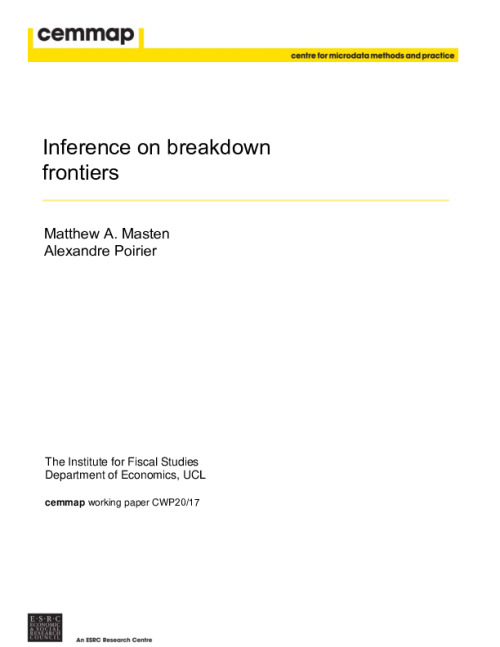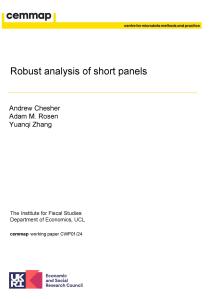Inference on breakdown frontiers
- Matthew Masten
- Alexandre Poirier
Published on 15 May 2017
A breakdown frontier is the boundary between the set of assumptions which lead to a specific conclusion and those which do not. In a potential outcomes model with a binary treatment, we consider two conclusions: First, that ATE is at least a specific value (e.g., nonnegative) and second that the proportion of units who benefit from treatment is at least a specific value (e.g., at least 50%). For these conclusions, we derive the breakdown frontier for two kinds of assumptions: one which indexes deviations from random assignment of treatment, and one which indexes deviations from rank invariance. These classes of assumptions nest both the point identifying assumptions of random assignment and rank invariance and the opposite end of no constraints on treatment selection or the dependence structure between potential outcomes. This frontier provides a quantitative measure of robustness of conclusions to deviations in the point identifying assumptions. We derive √N-consistent sample analog estimators for these frontiers. We then provide an asymptotically valid bootstrap procedure for constructing lower uniform confidence bands for the breakdown frontier. As a measure of robustness, this confidence band can be presented alongside traditional point estimates and confidence intervals obtained under point identifying assumptions. We illustrate this approach in an empirical application to the effect of child soldiering on wages. We find that conclusions are fairly robust to failure of rank invariance, when random assignment holds, but conclusions are much more sensitive to both assumptions for small deviations from random assignment.









